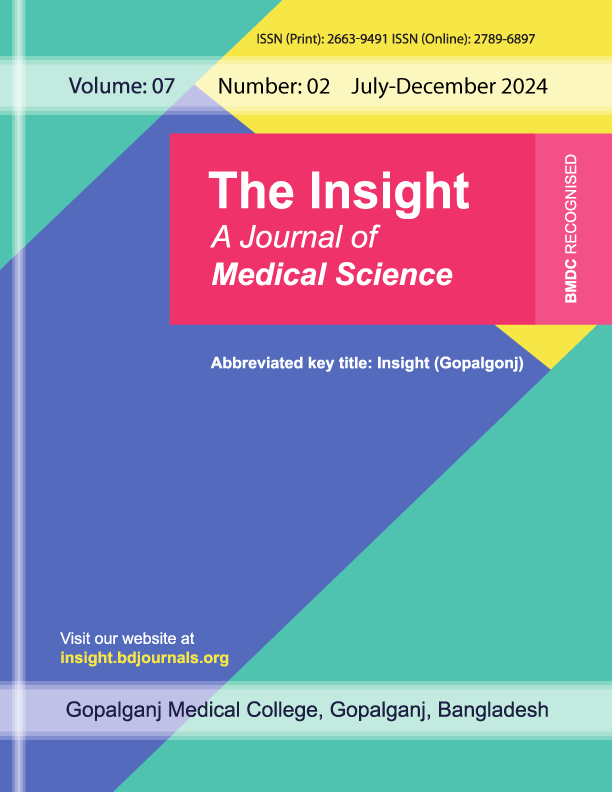Published 07-07-2024
Keywords
- Olfactory Neuroblastoma,
- Head and Neck Cancer,
- Hyams Grading,
- Recurrence,
- Survival Analysis
Copyright (c) 2024 The Insight

This work is licensed under a Creative Commons Attribution 4.0 International License.
How to Cite
Abstract
Background: Olfactory neuroblastoma (ONB) is a rare malignant tumor arising from the olfactory epithelium and remains poorly characterized in low- and middle-income countries. This study aimed to evaluate the clinicopathological spectrum, treatment approaches, and outcomes of ONB among patients with rare head and neck malignancies in Bangladesh. Methods & Materials: A retrospective review was conducted on 100 rare head and neck cancer cases diagnosed from July, 2023 to June, 2024, including 25 ONB patients. Data on demographics, clinical features, histopathology, treatment, and follow-up were analyzed. Logistic regression and Cox proportional hazards models were used to identify predictors of recurrence and mortality. Results: ONB constituted 25% of all rare malignancies. Most patients were aged 30–50 years (48%) and male (56%). Nasal obstruction (80%), epistaxis (60%), and anosmia (48%) were common symptoms. Hyams grade II was most frequent (32%). Surgery followed by radiotherapy was the predominant treatment. Disease-free survival at ≥2 years was 72%. Hyams grade III–IV was the only significant predictor of recurrence (OR = 4.75, p = 0.018) and mortality (HR = 5.10, p = 0.009). Conclusion: High-grade ONB is strongly associated with poor prognosis. Tumor grade was the most reliable predictor of both recurrence and mortality, underscoring the importance of early detection and multimodal therapy in ONB management in low-resource settings.



